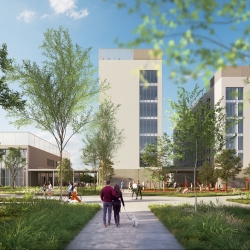
The regeneration of the ex Fonderia Corni area (acquired and developed by Supernova) in Modena includes an equipped park of about 14,500sqm open to the public, short term shared housing for students and workers with about 365 beds, more than 200 parking spaces and 3 retail stores.
The regeneration is designed in two phases, each dedicated to one plot and its public works.
The first one is dedicated to the realization of the short-term housing facility and retail stores, which will cover an area of about 1,000sqm, in addition to the development of a first part of the park of about…
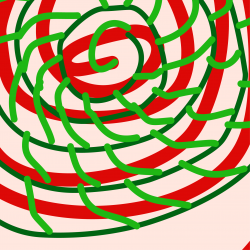
Accadìa is a town of about 2,236 inhabitants that lies is located in the vast southern Dauno Subappennines, in the province of Foggia.
In 1930 Accadìa was destroyed by a tremendous earthquake that condemned it to become one of the many “Ghost Villages,” over time gradually forced among the trees of the beautiful neighboring forests that stretch all the way to the Tavoliere.
Rione Fossi has deferred to the new Acadìa the extension to the territory’s directories. Yet, the mysterious Acca Dea and the legend of the Dardans, continue to hover in the patterns concentric patterns of the ancient ruined fabric, around the ruins of the Chiesa Matrice, with the remains of…
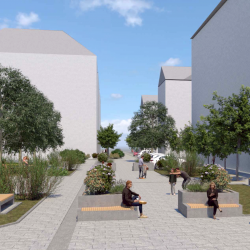
The PINQuA and Urban Regeneration Calls have funded the interventions in two peripheral districts of Aosta, both of which were mainly working class settlements.
The cardo and the decumanus of the Roman urbs inspired the projects that reaffirmed them as a scheme of rebirth and regeneration for the two neighbourhoods.
The Cogne neighbourhood was built at the beginning of the 1900s by the Ansaldo steel factory, to house the workers drawn from other Italian regions.
The Decumano along via Colonnello Alessi is the core of the project. It offers a bicycle / pedestrian lane,…
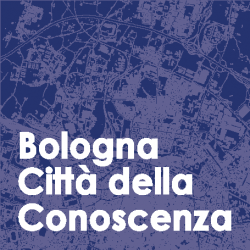
In order to take full advantage of the great opportunity offered by the PNRR resources and the European recovery strategies, Bologna is betting on the development potential of its knowledge ecosystem.
The ensemble of places in the City of Knowledge is mainly divided into five districts that host activities of great scientific, technological and cultural relevance for the city and offer further development opportunities with the regeneration of disused areas.
The Integrated Urban Plan prepared by the Metropolitan City of Bologna in accordance with the provisions of PNRR M5 Inclusion and Cohesion, with an investment of more than 157 mln committed…
“A City that aspires to take shape as a Laboratory of territorial innovation that, in the wake of the tradition inaugurated by the Bourbons with the architectural and economic-social utopias, enhances the signs of history and re-proposes and re-launches it in a vision of a System that goes beyond the City, placing it at the centre of a vast area dimension”.
This section of the D.O.S. finds its application in a sphere of intervention that historically identifies the most marginalised areas of the city, for which the physical barrier of the railway line has always marked their destiny.
Rione Acquaviva and…
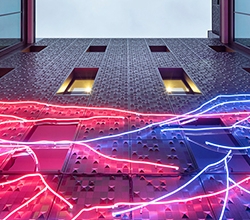
Turning a neglected urban landmark into a bold dream for the neighborhood’s future: that was the challenge Il Prisma took up when renovating Milan’s former Tax Collector’s office. Renamed Vetra Building, the property begins the process of revival from the facade; it then proceeds to other spatial, material and plant assets, earning the building a LEED Platinum status. The main entrance is thus divided into two parts, creating on the ground floor a new square around which commercial activities and artistic initiatives unfold, and a covered walkway that leads to the arcades overlooking Vetra Square and the neighboring redeveloped…

The area of the Fontivegge station, certainly among the most problematic in the Umbrian capital, has been the subject of an extraordinary commitment of the city administration in terms of human and financial resources, at the center of the Peripheries Plan and Urban Agenda funds ( based on ERDF and ESF funds). The richness of the interventions and the multiplicity of actors involved (in addition to the public administration: construction companies, professionals, universities, third sector subjects; state railways …) give authorization to outline a real “Fontivegge” laboratory, whose first outcomes are beginning to be visible.
The possibility…

The aim of the action is to transpose into the municipal planning instruments elements and themes of reflection developed in different contexts and in particular to test the possibility that they may constitute an explicit reference for the definition of the strategies of the Services Plan, one of the three instruments of which the Piano di Governo del Territorio (Territorial Government Plan) is composed, as provided for by the Lombardy Region regulations.
The objective is the improvement of relations between public administration and citizens; a fundamental necessity to make the city’s development more balanced and enhance the role of public…

The former MiraLanza industrial complex on the edge of the Rivarolo district in Valpolcevera ceased operations in 1999, and since then the vast four-hectare area has not found a functional use. Various town-planning proposals followed one another, which never found concrete implementation, and which envisaged reconverting the complex to residential functions with decidedly large sizes and volumes. The ineffectiveness of these forecasts was due to a misreading of the real vocation of the area, in a barycentric position for the city’s commercial traffic, lapped by the railway and close to the main road links.
In 2020, the municipal administration realised…

Reggio Emilia City Without Barriers’ (RECSB) has been running since 2015. The project pursues the political mandate to act a transversal and inclusive cultural horizon, with the aim of creating a city that is attentive to the rights of the most fragile people, that eliminates the causes of marginalisation and discrimination, and that is hospitable and beautiful. The main objective is to approach integrated processes of sectoral policies with the direct involvement of citizenship.
The areas of intervention relate to institutional, study and research actions for: the welcoming and accessible city; barrier-free culture, art and fragility; community awareness of the…








